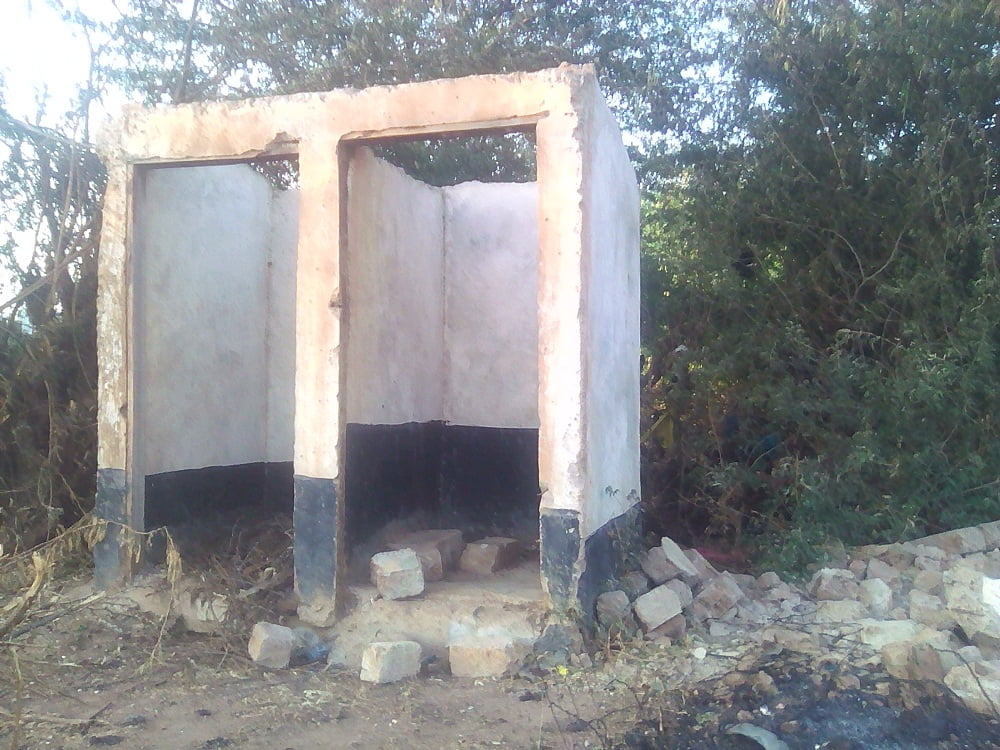By Amoto Ndiewo
The practice of open defecation is so rampant in Tana North Sub County that the 2019 Kenya Population Housing and Census (KPHC) Report revealed that 50.2 per cent of the population in the area conduct the practice.
The practice has led to health hazards and womenfolk being sexually assaulted and ending up with unwanted children or diseases.
Bura Sub County Hospital’s Senior Clinical Officer Muhideen Sheikh Salah says open defecation leads to various infectious like cholera, dysentery, typhoid, parasitic and worm infections, and bilharzias etc.
The Ministry of Health Report approximates that 19,500 people countrywide die yearly from diarrhoea and that 90 % of the cases are directly attributed to poor water, sanitation, and hygiene.
The report adds that sanitation related deaths exceed death from malaria, HIV and top five killer diseases combined.
Salah warns that wearing open shoes in open defecation area exposes residents to soil transmitted worms and bacterial infections resulting in diarrheal infections.
“Diarrheal infections weaken adults thus reducing their economic productivity. Lactating mothers suffer since they end up having little to offer to their infants,” noted Salah.
Tana River County Standardization Monitoring Assessment Relief and Transition (SMART) Survey Report, February 2020 revealed that the county losses Shs 257 million annually to premature deaths, healthcare cost and productivity.
World Bank’s Water and Sanitation Program estimates Kenya’s annual loss to poor sanitation is Kh27 billion.
Salah said besides open defection spreading communicable diseases, there are environmental determinants attached it.
Data from Bura Sub County Hospital reveal a worrying trend of diseased. Acute Respiratory Infection is 8.4%, fever is 43.3%, while watery and bloody diarrhoea lies at 19.3% and 1.2% respectively.
He explains that diarrhoea is a big problem in the area despite the government’s efforts to curb its spread.
‘Children under five are entitled to preventative zinc supplement shots,’’ he explained.
Salah explains that implementation difficulty lies in few and far apart clinics, self-medication, overreliance on traditional therapists and ignorance.
Amina Salat (not real name) says that she is traumatized by the experience she had after some men saw her openly defecating in Mororo shantytown bushes.
Mumina Mahat says Salat fled the area but she is still traumatized by the occurrence that happened three years ago.
‘Many womenfolk have been sexually assaulted, ending up with unwanted children or funny diseases,’ said Mumina.
She added that due to shame, most females do not report sexual assault cases.
‘Women’s social needs remain unmet in Tana River County, where school girls too, drop out of schools for similar reasons, ’’ she noted.
She added that the assaulted females live with diseases, injuries and stigma of the vice.
She expressed concern that little is being done to reduce the practice of open defecation adding that Mororo bushes are full of used and unused condoms.
Her sentiments were echoed by Mororo resident Kantona Dadosa who feels that nothing has been done to reduce the practice of open defecation.
He adds that the policy guidelines put in place haven’t helped much.
However, Tana North Public Health Officer Peter Momanyi denied sleeping on the job.
‘I’ve been carefully monitoring the situation, I will soon crack the remedy,’Momanyi promised.
Mororo Assistant Chief Mohamed Lokha said the shantytown’s 10, 799 residents living in 1,078 households only have 114 pit latrines.
2019 KPHC report adds that 2.8% and 2.9% of the residents in Tana North dump human waste in the streets and pit latrines respectively.
Lokha expressed fear that during rains, human waste can pilfer into the ground water which is the common water source and is reachable within 7 feet.
Social worker, Beatrice Mutinga attributes Mororo toilet scarcity to poverty and a cultural belief that evil spirits live in them.
“Some residents wonder why they should dig expensive toilets to be inhabited by the devils yet they don’t even have enough to eat,” she explained.
Tana River County SMART Survey Report says only 17% of the households in the area treat their water.
Mutinga adds that many people use contaminated water for drinking, domestic and personal use.
Despite the drawbacks, Abdullahi Mohamed, CEO Womankind Kenya, an NGO operating in Tana County said they are sensitizing the community, schools and Community Health Volunteers to create attitude and behavioural change.
He revealed Womankind’s partnership with Tana River County government to achieve Open Defecation Free Status.
Javan Bonaya Tana CECM Health, Sanitation and Medical Services called on the residents to change the narrative despite huge bush admirable to open defecators.
Bonaya said they are waiting for funds to build toilets.
‘Once the toilets are built, we will create fear, show open disgust for open defecation and publically shame those who open defecate. ’’He said.
Despite Tana North’s high prevalence of 50.2% embracing open defection, World Health Organization says globally, open defecation has declined by 12%. In 2017 there were 892 million people without toilets, 2020 there were reduced to 673 million.






